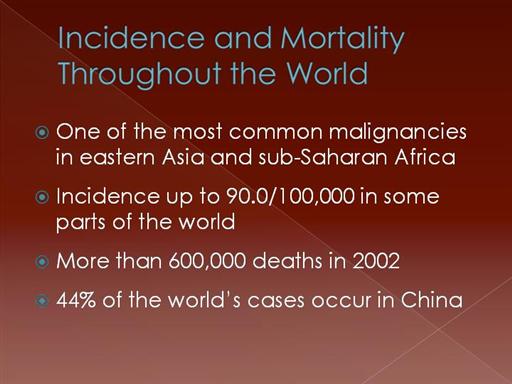The high incidence of primary liver cancer in East Asia and South-East
Asia is largely
attributable to the high prevalence of chronic HBV
infection in these regions. The early age of infection of people in
these regions accounts for significant differences in the clinical
course of the disease (with the prolonged immune-tolerance phase setting
the scene for development of long-term complications) compared with
people born in countries where hepatitis B prevalence is low (who
generally become infected as teenagers or adults and enter the
immune-clearance phase soon after developing chronic HBV infection).
This also explains the former groupís worse prognosis and response to
treatment. Screening for hepatitis B has been advocated for at-risk
populations born in countries with a high prevalence of HBV infection,
although the management pathways for individuals with chronic infection
detected by screening programs remain ill defined.
